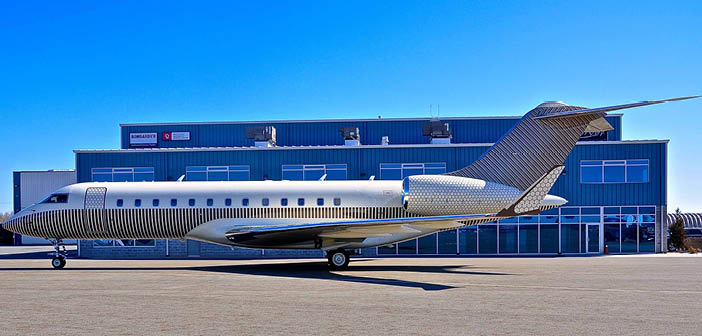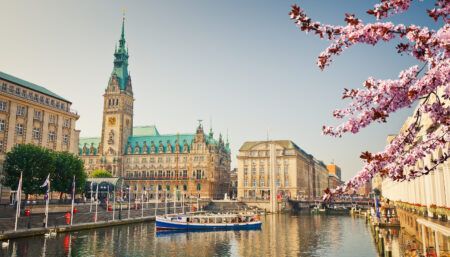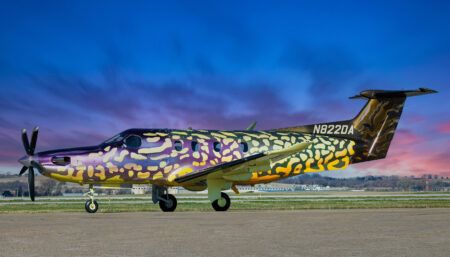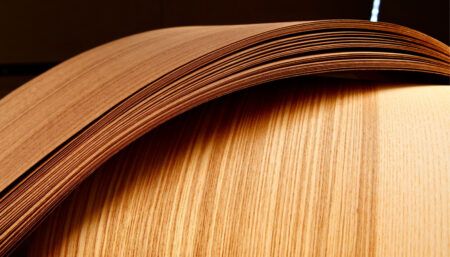Following the delivery of a refurbished Global Express combining pre-engineered components from Inairvation and custom elements designed in-house, Sean Gillespie, executive vice president of Flying Colours Corp, looks back over the complex project.
 How did the project progress?
How did the project progress?
The client confirmed in April 2016 that he wanted an extensive overhaul for his aircraft. We worked closely with him through a number of iterations to reach the final design freeze in July 2016. At that point design engineering took place and the process with Inairvation was established. Key points in the design engineering included surveying the aircraft to establish what we could integrate onto the existing shell, and figuring out what was needed to make sure new technologies could be integrated. Work on the interior and paint began in November 2016. The project was completed in mid-March 2017, before final testing took place.
How and where will the aircraft be used?
The aircraft is privately owned and will be flown mainly in the North Americas for business and pleasure.
What’s on board?
The entryway incorporates a crème stone floor veneer. From here, passengers can access a forward lavatory that features black granite stone veneer (also used in the aft galley) and a vanity unit with satin rose metalwork. The main cabin has two seating areas. The first has four reclining seats and the second has five seats – four in a club formation with a dining table and one placed in front of a custom-made work desk. The aft cabin features a three-seat divan and two more seats. This can be made into a double bed on request. The aft vanity unit features black stone granite veneers and satin rose metal work on the sink.
The sideledges have been pre-engineered by Inairvation and incorporate control panels for Lufthansa Technik’s nice HD IFE/CMS. The system also includes a wireless interface for iOS and Android PED integration and a Hollywood studio content service.
The seats are the new Global 6000 frame from B/E Aerospace. Townsend Leathers’ Classic cowhide is the main feature, with the squab and seatback being a pale beige color. The seat insert is embossed cowhide with a Cardoman-color American gator pattern. The lower sidewalls and the seat sideledges emulate this but also incorporate a chain link pattern that reflects the intricate double twill pattern of the carbon fiber used throughout the cabin. Kelly Green piping edges the seats. The seatback, armrest and vertical back band of the armrest feature Aniline Gaufrange, an embossed and hand-rubbed cowhide.
Which components were refurbished and which are new?
Nearly every aspect of the aircraft has been refurbished or modified in one way or another. Most systems needed modifications to ensure all the new technology could connect with existing systems correctly. Even the sidewalls have been completely refurbished to convert an outdated style into a modern, elegant look. New components were added too, such as a custom-made work desk in carbon fiber, stone veneer flooring and countertops and the B/E Aerospace rainbow LED mood lighting system. The installation of a Gogo ATG 5000 system enables better connectivity across North America.
Was the carbon fiber challenging to work with?
The presence of so much carbon fiber is unusual. Most of the monument surfaces feature carbon fiber veneer, accented by a dark ebony wood. We have many years of experience matching wood veneers, but aligning the complex twill pattern of the carbon fiber proved to be a real challenge. It was really intricate and took real skill and patience. Wood always has distinctive grains but they are not uniform. Strangely it was even harder to align the carbon fiber pattern correctly. An area like the club seat configuration has so many different parts – including tables, sideledges, PED holders and other small sections – that it requires painstaking attention to detail to ensure a homogenous pattern.
How did your lean manufacturing processes influence the installation?
We use lean manufacturing for all our projects – it helps to improve efficiency and reduce waste. For a refurbishment as intense as this, the ability to tightly manage the project is essential. This kept us on schedule as we could run various elements in parallel – for example, while the cabinetry team modified the cabinets, the upholsterers worked on the seats, the avionics experts worked on the Gogo ATG 5000 system and the paint team planned their activity.
We also had to keep the lines of communication open with Inairvation. Working so closely with a European partner was very new for us as we pride ourselves in having all required skills in-house. However, they were great to work with and by talking regularly we could make sure that the new nice HD CMS/IFE system and customized sideledges worked with the existing aircraft systems and airframe. The lean methodology combined with the open lines of communication were key factors in the success of the project.
 What tests did you conduct?
What tests did you conduct?
We conducted more than 90 flammability tests for this project. A good number of these related to the newly installed Inairvation components. The various modifications, the new surfaces and system updates all required testing.
The new wi-fi system also needed extensive testing as we were fitting modern technology to an older aircraft. Although we’ve installed these systems on many other aircraft this was a first for this model, so we had to certify it and perform a T-PED test. This ensures that the addition of a new electronic system doesn’t negatively affect existing systems.
We also conducted a final functionality test flight when we delivered the aircraft to the customer to make sure that all the systems were working to their expectations and to make any final tweaks as necessary. All the testing was conducted in-house by our quality assurance team.
Click here to read the first part of this story, where Kate Ahrens reveals all about the design of the aircraft
Click here to read the second part, where Tony Barrett gives an insight into the engineering aspects
Click here to read the full story in the July 2017 issue of Business Jet Interiors International





